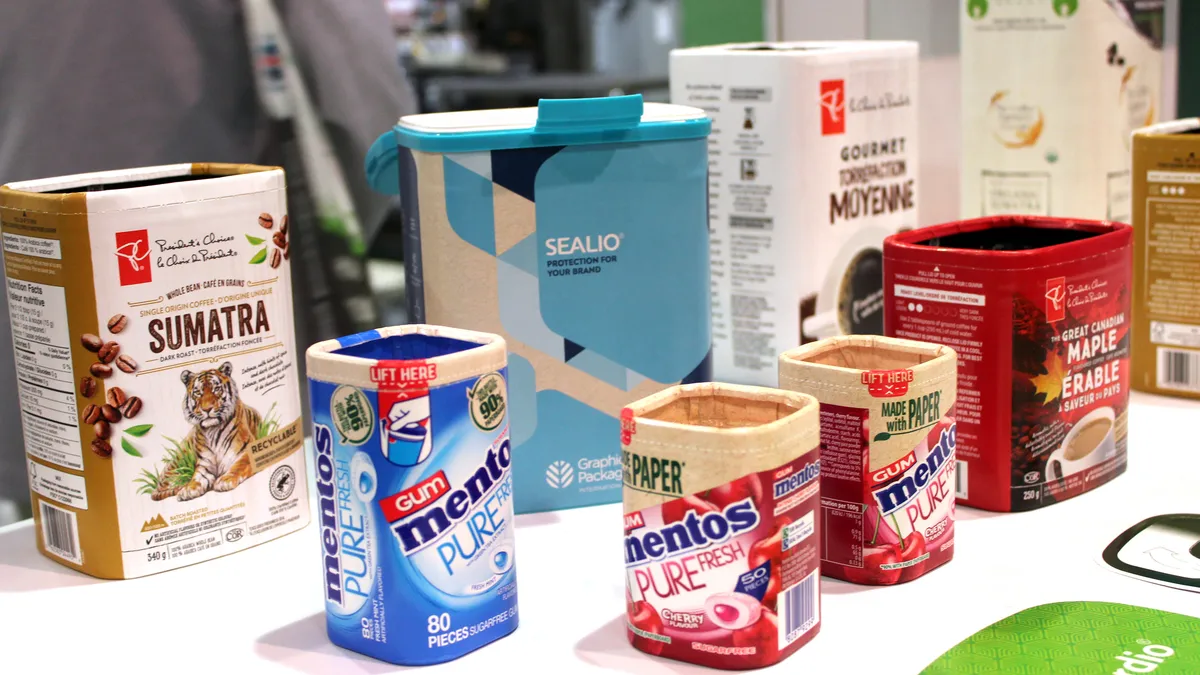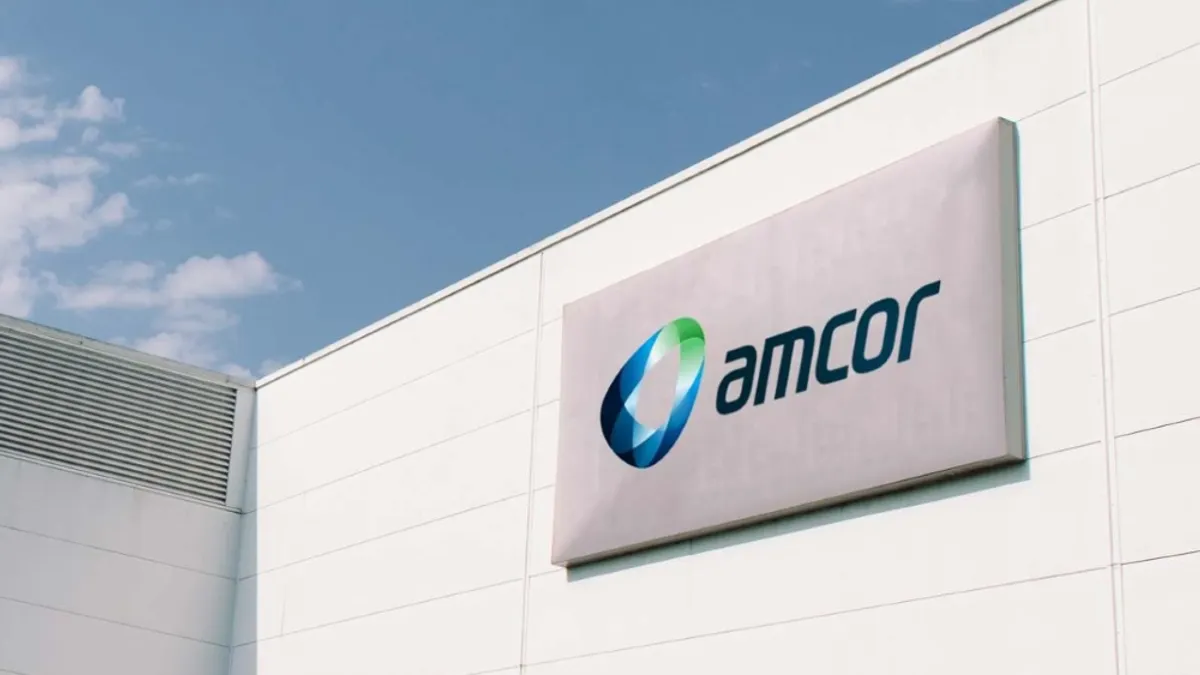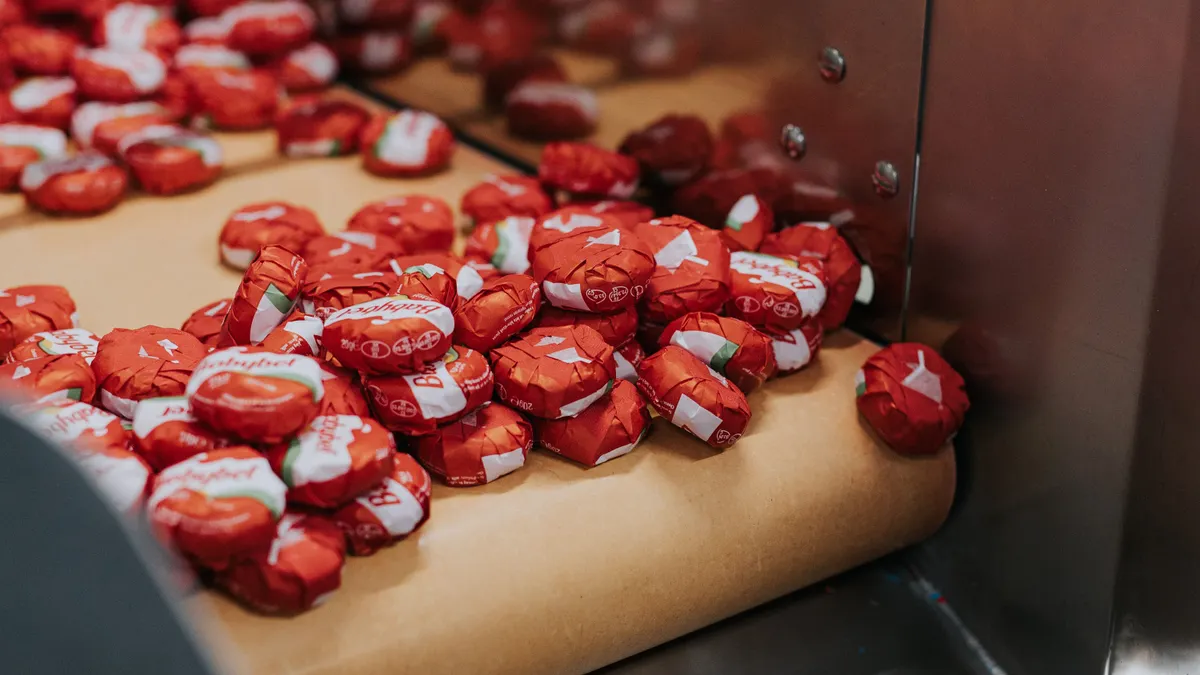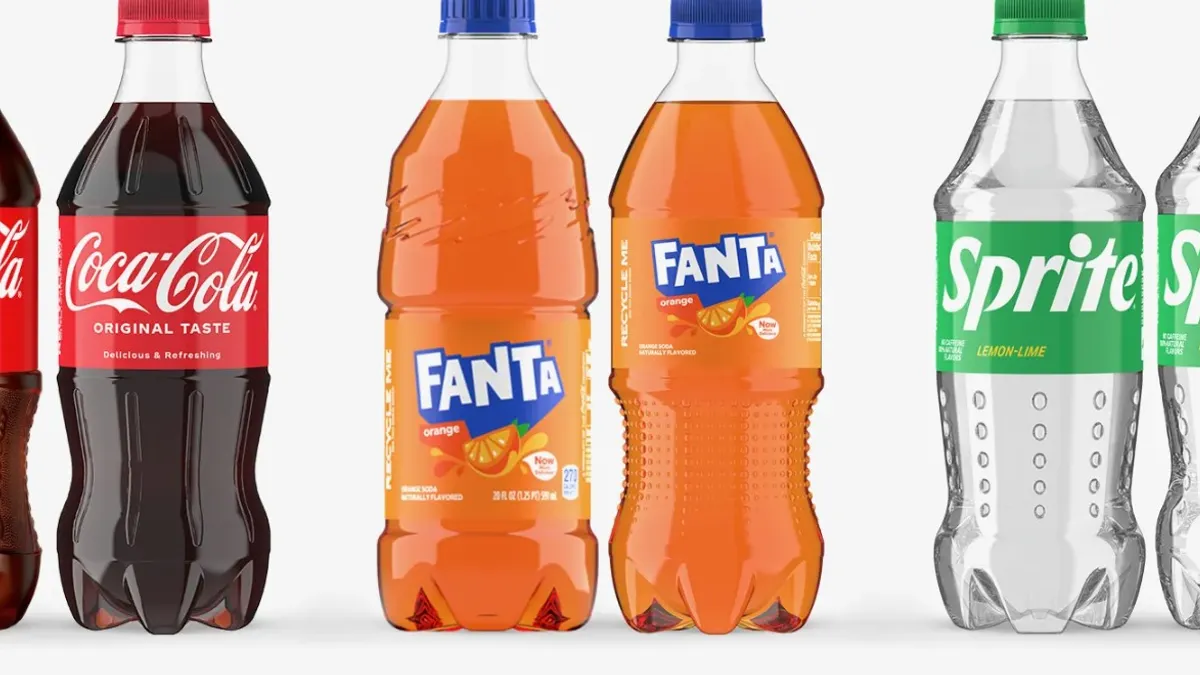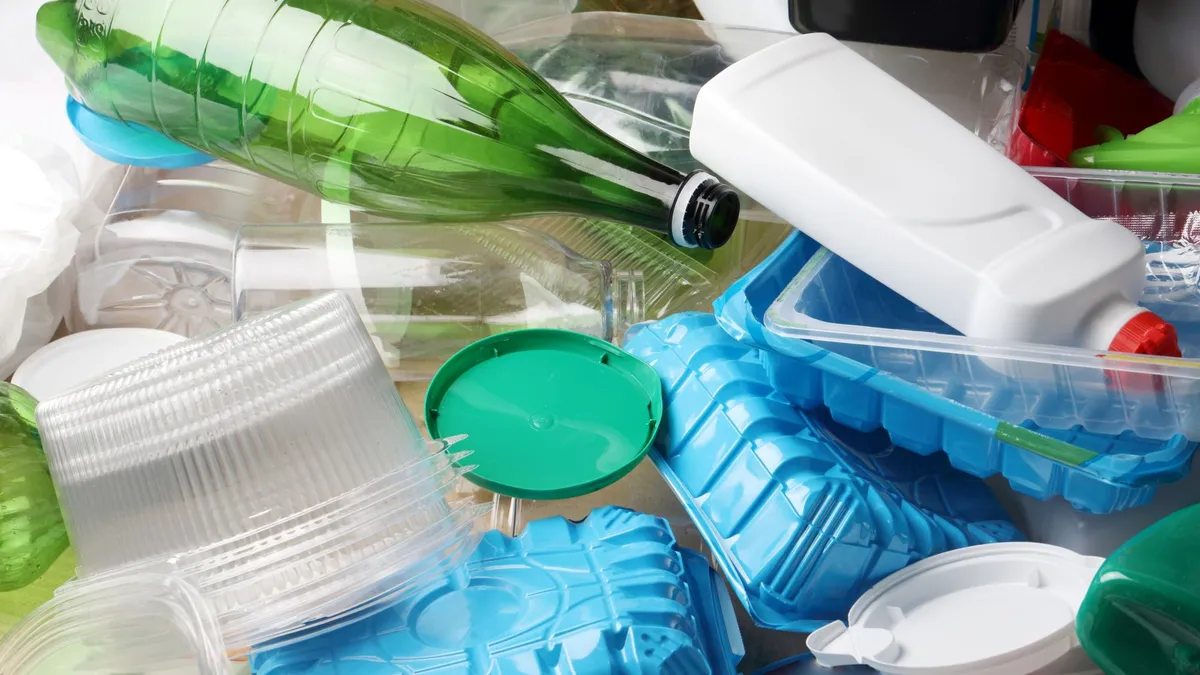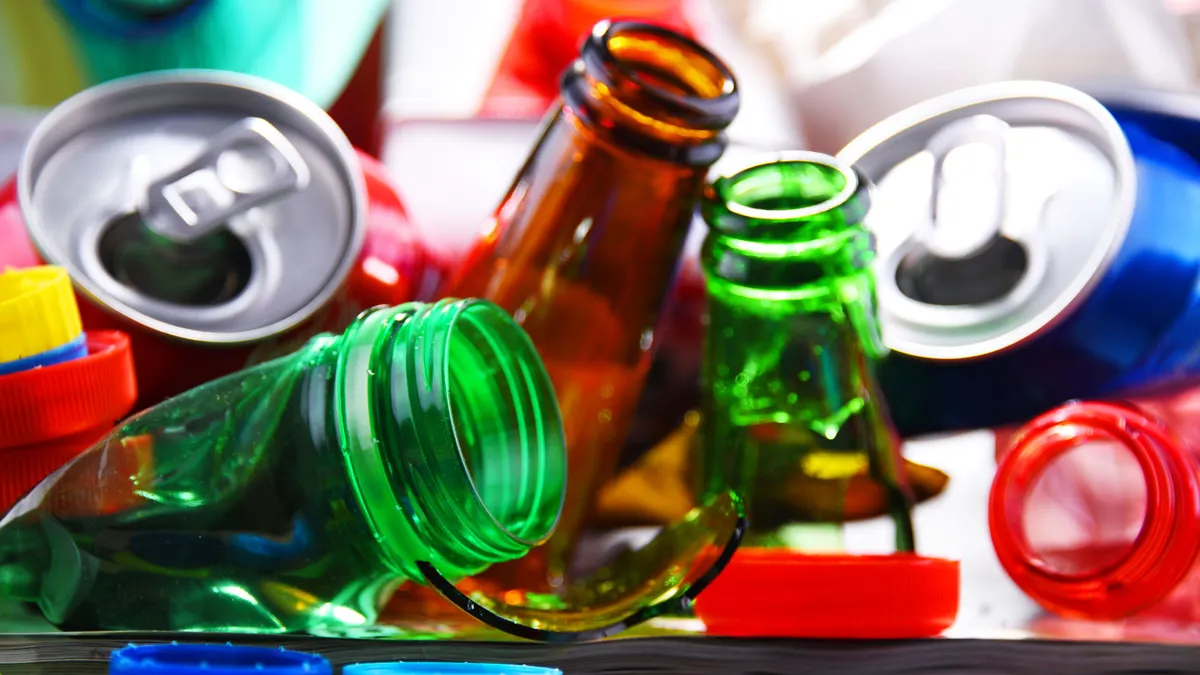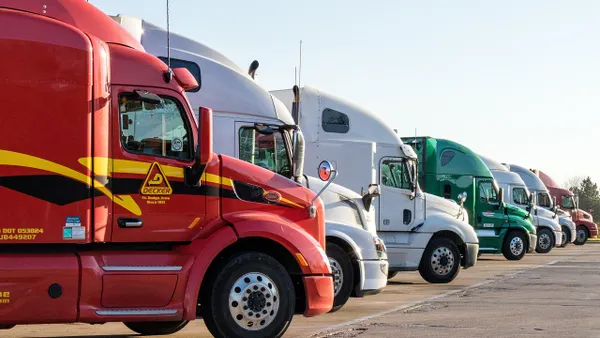When Graphic Packaging International released its 2022 ESG report last month, the company touted success in achieving two of its 2025 sustainability goals early: It reduced greenhouse gas emissions intensity and nonrenewable energy intensity by 15% each. The company also slightly shifted sustainability strategies and submitted new goals to the Science Based Targets initiative for verification, which it hopes to hear back about before year’s end.
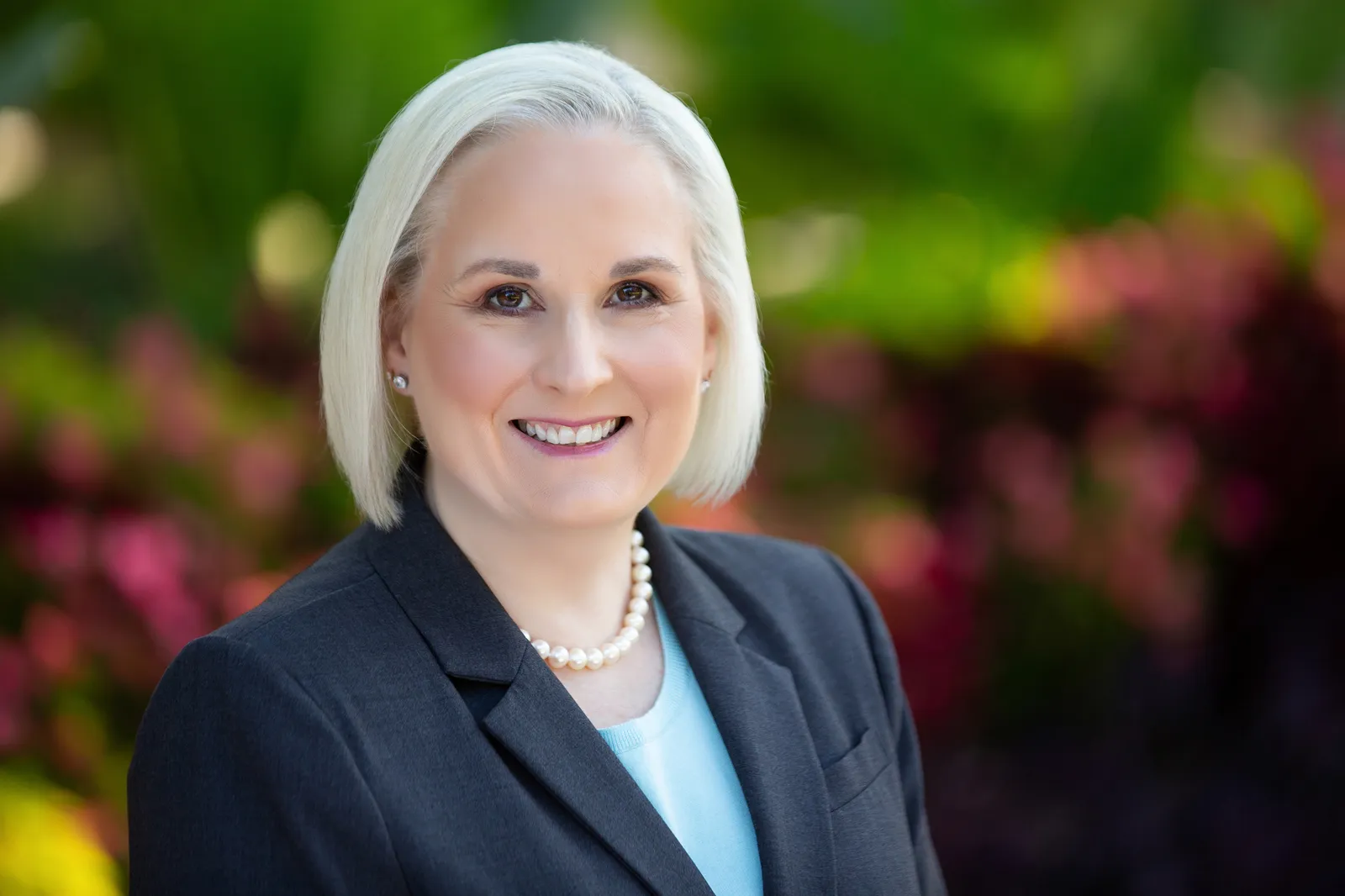
Michelle Fitzpatrick is at the helm of the company’s efforts to mitigate climate change impacts while executing ESG strategy. She joined Graphic Packaging as chief sustainability officer in 2021 and was the first person to hold the role.
Fitzpatrick spoke with Packaging Dive about GPI’s sustainability priorities and evolving strategy.
This interview has been edited for length and clarity.
PACKAGING DIVE: You just hit the two-year mark as GPI’s CSO, and you are the first person in that position. Does coming into a newly created role require a different strategy than taking over an already established CSO position?
MICHELLE FITZPATRICK: I think it’s a little bit of both. While I'm coming in new and it's the start of an era of having a chief sustainability officer, I wasn't walking into a company that hadn't thought about sustainability at all in the past.
Graphic Packaging had their goals established since 2016 that we're working against toward our 2025 targets. The company has been publishing a sustainability report for the past few years. They had a lot of the bones in place for a good program. What they didn't necessarily have was all of the structural parts to tie it all together.
Again, you’ve only been in the position for two years, but has the sustainability strategy already evolved? Is it a dynamic process or pretty static and you’re working toward the existing goals?
It's definitely evolving. We have undertaken thinking about our climate goals, for example. We’re looking at how the externalities have changed around us and how the external expectations of us as a company have changed — and how we’re addressing our portion of this collective global problem.
We are pivoting from having intensity based targets to setting absolute targets through the Science Based Targets initiative. I think that's a good example of thinking about how we're now taking a step back and looking at what are the external drivers and expectations of a company.
GPI’s 2022 sustainability report noted the company reached a couple goals earlier than expected. But it also showed backward movement in some areas, attributed at least in part to business growth. How do you balance sustainability and growth, especially in the volatile market?
The science-based targets are a great example of how you think about balancing growth with progress. What they do is help you think about setting an emissions reduction target versus an intensity target. The old school thinking was that I can't grow without growing my emissions, which is why you would have an intensity target.
When you are thinking about a science-based target and decreasing your emissions on an absolute scale, it forces you to take a step back and think about your strategy. As I'm implementing a capital project, how do I look at that in a way where I'm using less energy, or I'm using greener sources of energy, so that I can still grow my company, grow my production, but reduce my emissions to decouple emissions from growth? It's just a switch in mindset and thinking that helps you achieve that.
As you're thinking about doing those kinds of things, and you mentioned the down market, the great thing about sustainability is it doesn't have to cost more money — which is what the general mindset is that people go to. It can actually save you money. And if you’re using less energy, you're actually spending less money on that raw material and that goes straight to your bottom line and helps you grow your margins, or protect your margins, in a down cycle.
At Pack Expo last month, GPI representatives told me the company inserts sustainability at different points in the product life cycle, such as during product design or material sourcing. Describe in more depth what that means and why it’s a priority.
The reason it's a priority is because it's what consumers want, and it's what our customers want in order to meet various sustainability goals and deliver their products in packaging that is more sustainable and doesn't contribute to excess waste.
If you ask a consumer what is the most important attribute of the packaging for the thing that they're purchasing, it is that it's made with recycled content or that it's recyclable. So we think about how do we always make sure that we are optimizing our product design for recyclability — and that starts at the design phase.
You need to think about the treatments that you put on it, the glues, the resins that you use in the design of the product, the coatings that you put on the product. All of that contributes to how recyclable the product will be and how much fiber you're able to recover when you get to that recycle step at the end of life. Then as you think about the next stage in the design, we've already talked about that a little bit in the manufacturing stage: How do I optimize the manufacturing process to get the greatest yield yet to reduce my use of resources as much as possible, so that the product is made with the lowest footprint possible and is contributing to that circularity?
Then at the use phase, how am I designing the product so that it delivers the performance expectations that it needs? Because when you think about the package, what you're protecting inside the package has a much higher environmental footprint than the package itself. It's very important that the package does its job to protect the product that you're getting to the customer. So you want to make sure that your package is fit for purpose and that it's protecting the product with the least amount of impact and waste possible.
And at the end of life, we are always designing to think about recyclability or compostability. Getting back to the beginning circle often is dictated by the raw materials that you pick. So we're actively looking to source more renewable options for some of the barriers and some of the non-tree-fiber components of our package to make as much of our package sourced from renewable materials and as recyclable as possible.
Along the lines of sourcing, talk about GPI’s strategy for forestry and biodiversity.
We make sure that all of the tree fibers that we purchase for our virgin mills come from sustainably managed forests, and we do that through participation in the sustainable forestry initiatives.
Through that we have a very robust due diligence practice where we understand the wood basket, or the regions where our wood supply is coming from. We understand where there are sensitive ecosystems within those wood baskets and make it clear to our wood suppliers not to source wood from high conservation value areas where you have high biodiversity areas or other endangered species there. We require all of our loggers and wood suppliers to participate in different trainings so that they understand best management practices for when they're harvesting and delivering the wood to us.
Then we also follow that up with inspections. We do inspections of the harvesting activities to make sure that they're implementing those practices, that they're being protective of the adjacent land where they're harvesting, or that they're not driving through tree beds when they're conducting their activities. All to make sure that they are respecting the land and the nature that's present on the land where we are sourcing the wood from and that when we receive the wood that we know that the wood that we're purchasing was purchased sustainably.
You mentioned earlier the importance to consumers of product recyclability to consumers. Does Graphic Packaging prioritize its recyclability goals over other sustainability goals, or are they all on an equal footing?
They're all interconnected. And I would say that they're on an equal footing because many of the things that we need to do to optimize our product at the end are dictated by the choices we make and some of the other goals.
GPI is a global company. How do you get everybody on the same page and engaged with your sustainability strategy?
The great news is that the incoming employees, in particular, are extremely interested in making sure that they work for a company that has a similar purpose to their essential values.
Our employees see this through the engagements that our leaders have with our board and our board-level commitment — our board supported us in setting our science-based targets, for example. And then that flows down and our executive team shares our commitments with their teams during their global town halls. And so I think a lot of it comes through engagement as well as communication and aligning with what is important to our employees.


